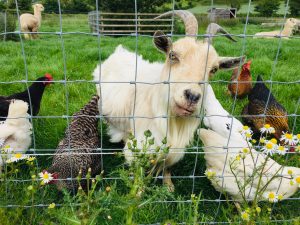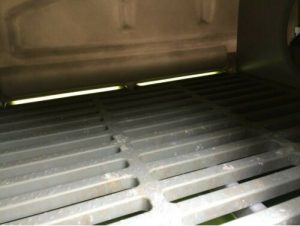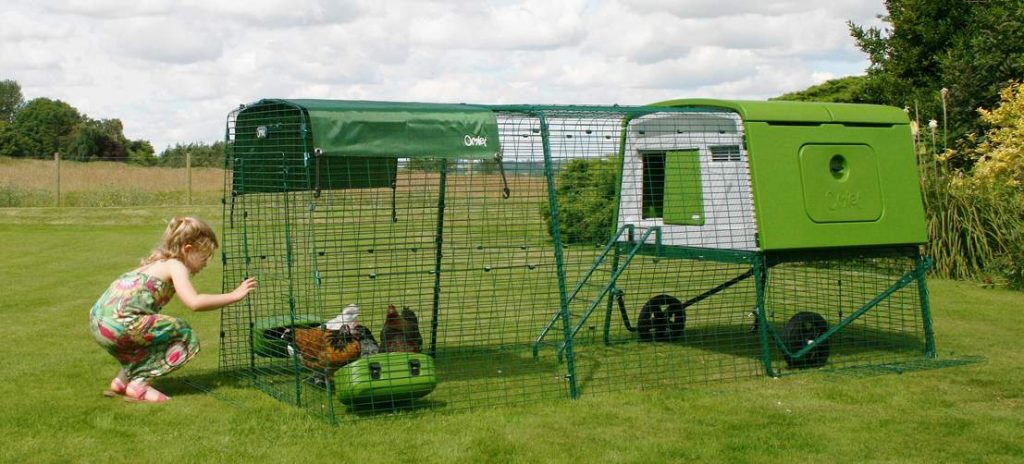Silkie Chicken Coop

Silkie chickens are probably everybody’s favorite breed of chicken. They like to be picked up by children and cuddled just like teddy bears. They are truly a unique and remarkable breed of chicken that make the most fantastic pets.
They do however require some special attention that other breeds might not necessarily need especially when it comes to housing and coops.
In this 3 minute guide we’re going to run through everything, we and other Silkie owners, have learned over the years regarding housing Silkies to find the best silky chicken coop.
How Much Space Do Silkies Need In A Coop?
Silky’s unlike some breeds will tolerate confinement and as such they make perfect pets when space is limited. Many Silkie owners state, us included, that they do not take well to a free-range setting unlike Rhode Island Reds, Iccies or Leghorns. Silkies prefer to stay in or around the coop area.
Inside the coop Silkies will require between 3 and 4 sqft of space per bird. But see this as a minimum space requirement because the more space you can afford any chicken, the better.
In the run, you will need to allow a minimum of 8+sqft per chicken . This will allow them ample room to be able to exercise, ‘peck around’ and socialize with other chickens in your flock.

What Kind Of Coop Do Silkies Need?
Silkies are best suited to certain types of chicken coops given that they are slightly fussier than other breeds!
These coops are usually smaller coops, where the roost bars aren’t too high off the coop floor. Smaller coops are better aswell so that they can feel safer once inside.
Remember Silkies are very docile but also very social. In human terms think of them like this, they would prefer to be inside next to a fire cuddled up with a good book, than out hiking in the hills.
6 Key Points Silkie Coops Must Have:
1. Excellent Ventilation
Silky chickens are not heat tolerant. Meaning they don’t like extreme heat. Most chickens are the same and all chickens are extremely prone to heat fatigue or heat exhaustion; Silkies are no different.
Whilst you might think they walk around all day in a big fluffy, frizzy feather jacket, so must like being hot – you’re wrong.
The frizzy nature of their feathers gives the impression they are perhaps hotter than they really are or want to be.
For this reason a Silky coop must be well ventilated to allow the removal of hot air, to cool the coop during the summer. Not only that, and I’m going back to high school physics; it must be well ventilated to remove moisture from the coop which can build up from chicken poop. Remember air flows hot to cold and moisture high to low.

Another consequence of chicken poop is ammonia. Silkies are particularly prone to respiratory problems so having a well-ventilated coop is a must. High levels of ammonia occur when there is a build up of chicken poop.
Ventilation – not a draft! Just to clarify here we are talking about well positioned vents directly proportional to the size of the coop. What you cannot have is Silkies sitting in a draft as this will make them sick very quickly.
2. Well Insulated
Now you might think that a well ventilated coop would be counterproductive to having an insulated coop – this is not the case.
Remember me saying in point 1 that Sikies are not ‘heat hardy’ they are also not cold hardy either! This means they don’t tolerate extreme cold temperatures, unlike some other traditional breeds such as those hailing from the U.K.
This means having a well insulated coop is a must if you’re going to have Silkies, the double insulated, twin walled coop from Omlet, called the Omlet Eglu Cube is perfect for Silkies. It works like a Thermo’s does, so when it’s cold outside the coop stays nice and warm and when warm outside the coop stays cool.

3. Predator Proof Silkie Coop
It’s as simple as this, Silky’s require from you: food, water, shelter and protection. You must ensure that the coop [& run] is robust enough to protect them from all predators.
Anyone who has had a predator get into that run or coop will know how devastating this is especially if you have children. It can be a heartbreaking experience. We have sadly suffered this experience when a fox got into a chicken coop and killed all of our chickens, only then to take just one.
If you live in an area with lots of predators you are going to need to take extra special care. Wooden coops with boards or siding that can be easily ripped off isn’t an option. A plastic coop is ideal as it can’t be bitten through, clawed apart or prised open at one of the corners. Again this is another tick in the box for the plastic Omlet Eglu Coop.
The run is typically where most predators would look to gain access; it is therefore vital that you have a strong steel welded mesh run, with an anti dig skirt, that runs around the entire run and coop. This will stop anything from being able to dig under the run and gain access that way.
4. Waterproof! [because Silkies aren’t]
Anyone who has seen the adorable pictures or videos of Silkies in the rain will know what I mean when I say your heart just melts. Again unlike other breeds of chickens and due to their loose frizzy feathering, Silkies get wet very fast if it rains.
It should go without saying but any coop should be waterproof. If you want Silkies I mean fully waterproof though. They can get wet and catch a cold and get sick.
You should also have an area in the run where Silkies can shade from the sun and rain too. A coop off the floor, ideally on a stand would work best for both these options.

5. Roosting Bars
Because they aren’t a particularly large breed of chicken and don’t have particularly big feet or long toes it means they don’t particularly like big thick roosting bars.
Instead they like smaller, thinner roost bars that they can sleep comfortably on.
Different chicken breeds will roost at different heights. Silkies will roost anywhere from 0-3 feet off the ground. So they won’t like a coop on the ground and will prefer one on a stand. Remember unhappy chickens won’t lay eggs frequently, so it’s important to get it right from the start.

6. Cleaning and Sanitation
Not just related to Silkies but this is related to all chicken coops – they must be cleaned. No one likes this task but, hey, it has to be done nonetheless.
This is where plastic chicken coops come into their own element as they are so much easier to clean than wooden ones. With the ‘Omlet Eglu Cube’ you can simply pull out the droppings tray and because it’s plastic, simply wipe it down and return it all in a matter of seconds.

When cleaning the whole coop, removal of a whole one side of the coop or back is important as it just makes life so much easier!
Again a plastic coop can be simply wiped down or pressure hosed clean and be dried again in a matter of minutes.
Plastic vs Wood? (Spoiler: Plastic wins hands down!)
Plastic doesn’t rot, this means:
- Much better longevity you can expect 15+ years from a ‘good’ well built plastic chicken coop.
- DIY & maintenance free! You won’t ever have to sand, paint or wood stain a plastic coop.
- We have covered how much easier they are to clean but we didn’t talk about mites. With a plastic coop it is much easier to get rid of mites, like red mite. Red mites hide in the cracks in the wood and come out mainly during the night and bite and burrow into the chickens feet and legs.
Omlet Eglu ‘vs’ SnapLock Chicken Coops
Of course you have alternatives to the Omlet range. Snaplock makes plastic chicken coops too but they are more expensive and don’t come with the run. You end up paying quite a lot for the Snaplock ‘brand’ and they therefore aren’t really worth it.
Compare the reviews between an Omlet coop and a Snaplock, like we have and you’ll see that Snaplock just don’t make their coops to the same standards.
We actually dislike the very USP that SnapLock has, which is that the parts can be ‘snapped’ together easily. Well this means they can also be unsnapped quite easily for instance by something like a predator.
Other bad reviews state that the panels are very flimsy and they also aren’t ‘twin walled’ like the Omlet coops, so they wont keep your Silkies warm in winter and cool in summer.
Why pay more when you get less – avoid.
Best Silky Coop
Compiling all the points, we have narrowed it down to one clear winner:

Why Buy an Omlet Eglu Coop for Silkies?
- 17,000 great reviews!
- Best plastic coop on the market
- Fast delivery
- Excellent customer service
- 2 year warranty! [as far as we are aware Omlet are the only chicken coop brand to offer any warranty!]
- Wheels – making it really easy to move for just one person.
